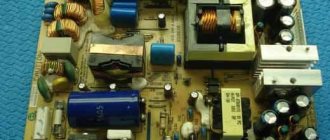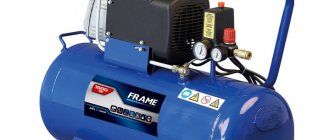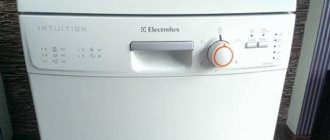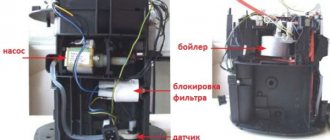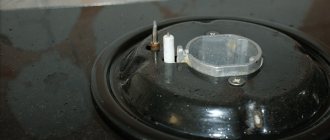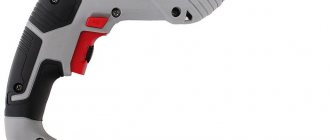Advantages and disadvantages
Mechanical devices are necessary to control body weight. They show the correspondence of weight to height and age - the state of human health.
Advantages of mechanical floor scales:
- the cost is low;
- strength;
- no special storage conditions required;
- understandable to anyone;
- operation does not depend on electricity or batteries;
- easy to use;
- long service life.
Disadvantages of mechanical floor scales:
- error;
- no additional features;
- limiting the weight of the person being weighed.
Manufacturers rating
The rating of models from the most famous manufacturers by price categories will help you make the right choice.
Mechanical scales
All mechanical devices measure only the user's weight.
Budget models
| Model | Characteristics |
| Atlanta ATH-825 Price: 350 rub. A mechanical device with a maximum permissible error of 0.5-1 kg. The metal body and textured plastic surface of the platform allow the device to last a long time and be safe for the user. A special scale for the correct ratio of weight and height is applied to the surface. Pros:
Cons: high error. | |
| Irit IR-7312 Price: 390 rub. Mechanical scales with an accuracy of 1000 g and manual adjustment and zero function. The body and platform are plastic. User weight limit 130 kg. Pros:
Cons: plastic body. |
Middle price segment
| Model | Characteristics |
| Endever Aurora-533 Price: 500 rub. Mechanical scales with a maximum load capacity of 130 kg. Plastic platform and rubber feet to prevent slipping. The error is in the range of 0.5-1 kg. Attractive floral print on platform. Pros:
Cons: high error. | |
| SUPRA BSS-4062 Price: 590 rub. A mechanical device in a metal case with a division value of 1000g. The maximum permissible weighing value is 130 kg. Attractive floral design on the blue background of the scale platform. Pros:
Cons: low maximum permissible weight. | |
| Mayer & Boch MB-24292 Price: 650 rub. The special silicone coating of the platform and anti-slip feet ensure a high level of user safety during weighing. The simple, attractive design of the compact device will decorate the interior of any bathroom. Weight limit 130 kg. Pros:
Cons: low level of accuracy. |
Premium models
| Model | Characteristics |
| Maxwell MW-2656 W Price: 790 rub. Ultra-precise mechanical scales with an error of no more than 100 g and a weighing range of 1-130 kg. Special wheel-regulator to minimize errors. Plastic platform with anti-slip coating and rubber feet. Pros:
Cons: plastic body. | |
| EKS 8632 SV Price: 990 rub. Mechanical scales with an open scale and a textured rubberized platform surface. The maximum permissible user weight is 150 kg. Rubber feet with adjustable function to prevent slipping. Pros:
Cons: none found. |
Electronic balance
Among electronic models you can find simple devices for weighing and multifunctional devices for diagnosing health conditions.
Budget models
| Model | Characteristics |
| Galaxy GL 4830 Price: 650 rub. Floor scales with a maximum permissible measurement of up to 180 kg. Measurement error 100 g. Weight units kg, stone lb. Battery life indicator, display backlight and automatic device shutdown. Smooth glass surface of the platform. Pros:
Cons: smooth surface of the platform. | |
| Tefal PP1148V0 Turquoise Price: 990 rub. The device is from a well-known manufacturer in a plastic case. Tempered glass platform surface. Wide display for displaying information. The device automatically turns on and off, which preserves the charge of the lithium battery for a long time. The maximum safe load on the platform is 160 kg, error no more than 100g. Pros:
Cons: low measurement weight limit. | |
| Scarlett SC-BS33E092 Butterfly Price: 700 rub. The device platform overload indicator and battery load indicator, auto shutdown function and decimal weight measurement system are designed for user convenience. The surface of the platform is glass and is designed for 180 kg with a measurement error of 100 g. Pros:
Cons: Slippery platform. |
Middle price segment
| Model | Characteristics |
| Yunmai SE White Price: 1500 rub. Scales with BMI function in kg and lb for users up to 180 kg. Display of indicators on a wide backlit display. 16 memory cells to display the user's last weight. Ability to synchronize with fitness applications on Android and iOS. The surface of the platform is tempered glass, the body material is plastic. Power type: 3 AAA batteries. Pros:
Cons: none found. | |
| Bosch PPW 3320 Price: 2350 rub. Household floor electronic scales with a maximum measurement weight of 180 kg and an error of 100 g. The device automatically determines the mass fraction of water and fatty tissue in the user’s body. Automatically turning the device on and off will save battery power for a long time. Platform and body made of glass. Convenient wide display for displaying information. Pros:
Cons: glass body. | |
| AEG PW 5661 FA Price: 2400 rub. The device case material is stainless steel. Displays weight in kg and lb on a wide, backlit display. Additional options include 10 memory cells and determination of the mass fraction of water, fat, muscle and bone tissue in the body. Powered by AAA batteries. Pros:
Cons: none found. |
Premium models
| Model | Characteristics |
| Smart scale Picooc S3 Price: 7000 rub. Possibility of synchronization via Wi-Fi (2.4GHz) and Bluetooth 4.0 with the manufacturer’s cloud service to control changes in body parameters. Compatible with devices iOS 8.0 and above, Android 4.3. Additionally, it calculates: BMI, fat tissue (including visceral), water, muscle and bone mass, biological age, basal metabolism, protein in the user’s body. The application menu is in Russian with a section for recommendations on setting and achieving goals. Auto-recognition of an unlimited number of users. The surface of the platform is durable tempered glass. Pros:
Cons: smooth surface of the platform. | |
| Brabantia, with weight monitoring Price: 7800 rub. The device with a special anti-slip surface and a rubberized carrying handle is absolutely safe for use in saunas, baths, and bathrooms. Control over changes in weight and other indicators is carried out through recording in a memory cell, the number of device users is up to 8 people. Determines the parameters of the mass fraction of fat, bone tissue and moisture in the body. It is recommended to track weight dynamics in the user’s personal diary on the device. The maximum permissible user weight is 160 kg. Control is carried out via the touch panel. Pros:
Cons: none found. | |
| Soehnle Body Balance Comfort Select Price: 12,000 rub. The measuring platform of the device is made of tempered glass and is equipped with a special mobile display for controlling and displaying information. The measurement system is decimal or pounds. By using a special technology of multi-frequency bioimpedance measurement, the parameters of tissue fluid, fat and muscle mass are monitored. Transfer data to a PC via USB port and special software for storing and analyzing indicators of 8 people. In quiet mode, the display shows the ambient temperature and the current time of day. The measurement accuracy does not depend on the proximity of radio points. Pros:
Cons: high cost. |
Installation of mechanical floor scales
Mechanical scales are a device consisting of a platform and a housing. The top is equipped with a scale protected by a plastic or glass coating.
The movable platform consists of four fixed legs, four metal arms connected in pairs, a horizontal plate, a spring and a rocker. The rocker arm connects to the pointer, monitors the tension of the spring, and changes the position of the pointer.
The basis of the design is represented by a measuring spring, which stretches during weighing. The spring is a measuring element. The sensing element is attached to a horizontal plate.
When a weight (an object, a person) acts on the scale platform, the spring moves down. The stretching changes the value of the hand on the dial.
Mechanical scales are easy to use. To begin with, it is installed on a flat, level, hard surface. This eliminates the error that will occur when installing the scales on a carpet or soft surface.
If it is necessary to carry out regular weighings with recording of exact changes in body weight, the device is installed in the same place, since when moving there is a risk of being placed on an uneven surface.
The scale control is adjusted to zero. To ensure that the hand is positioned correctly, look for the colored or bold mark on the dial indicating the start of the calculation.
Be careful when standing on the device. First, place one foot, make sure that it is standing steadily and does not wobble. Then move the other leg.
To accurately determine body weight, it is recommended to weigh yourself at the same time of day, remove shoes and clothes. The procedure is carried out 2 hours after waking up. If you weigh yourself after a meal, the readings will not be accurate, so it is better to carry out the procedure before a meal or after a few hours.
Tips for repairing electronic scales
The very first thing you need to do is check whether the batteries of the electronic scales are suitable. To do this, you need to remove the housing from the structure. Next, all batteries are removed.
To make the picture more complete, it is advisable to check them on another device. But before that you need to find out for sure whether it is working. If the power supply is no longer suitable, then you simply need to purchase new batteries. Next, inspect the cable; it connects the display and the scale board.
The cause of the malfunction may be the fact that the cable is not tightly adjacent to them.
To do this, the board is raised slightly and pressed tightly against the display.
A small block of wood will be useful here. It is installed between the lower case and the board.
The next thing you want to pay attention to is the contact ends of the scales. During operation, they are tightly adjacent to the legs of the scales. It is important to take into account that with frequent use, the metal on the tips may become thinner. As a result of this, they will show an error.
To solve this problem you will need a relay. It must be of the appropriate size; it requires replacement of contacts. And at the end, solder them to the wires or simply attach them.
After the above manipulations, you should clean the electronic scales. All remnants of food, dust, and dirt are removed from the surface and inner layer. They could have gotten in during operation of the device.
They must be dry; to do this, wipe them with a dry towel. It is important that water does not get inside, as this may cause damage.
If you put more weight on them than is allowed, it may show incorrect data. Carrying out calibration of scales. You need to press the button and hold it.
Carry out this action before CAL appears on the screen.
Next, the value of the mass is displayed, thanks to which the calibration will be carried out.
You can use any item that has the appropriate weight.
After a few seconds, PASS will appear and the calibration will be completed. If calibration fails, FAIL will appear.
Types of mechanical floor scales
Household
The most common type for home use. Easy to use. It is enough to install them correctly and you can start weighing. Affordable, strong, durable. When choosing this unit, check it for errors. To do this, you need to weigh an object whose mass is precisely determined, for example a package of salt. Various models show from 100 to 500 grams.
Medical
Mechanical scales are used to determine the weight of sick people and patients undergoing rehabilitation.
Weighing is carried out on two scales that need to be configured. When weighing, a lock (special lever) releases the rocker arm (a part of the lever mechanism).
By moving the weight along one scale it is necessary to achieve an equal level. Once this is done, the exact same process is repeated for the exact scale. The values are read from both scales of floor mechanical scales and summed up.
This scale is not intended for home use. Since the dimensions are large, and the unpresentable appearance is unlikely to suit the design of the house. There are floor-mounted options with a height gauge. With them it is convenient to immediately calculate the correspondence of height and weight.
Trading
Similar to medical scales, but more accurate. A distinctive feature is the increased platform area. Its surface is made of durable steel and is very smooth.
Industrial
They are even larger in size. Measure from hundreds of kilograms to hundreds of tons.
Location of industrial models:
- factory;
- customs;
- transport control point;
- stock.
Checking and adjusting scales
The scales are installed on a flat, smooth, stable surface of the counter.
The installation of ordinary table scales is checked by the position of the jibs in two positions - straight and when they are rotated at an angle of 180° to the table plane. In both positions the jib must be in balance.
Check the correct operation and adjust the scales with control weights of equal weight, equal to 1/10 of the load capacity, in eight positions. Weights are placed in the corners, along the edges and in the middle, i.e. at all points of support. In properly operating light-duty scales used in canteens, there should be no deviations from balance.
An indicator of the correct installation of dial scales on the site is the level, the air bubble of which should be in the center of the circle. Adjustment is made by screwing or unscrewing the legs located under the scale body.
The needle of a correctly installed scale should be at zero. Otherwise, in the cup or chamber located under the weight plate of the scale, the load (seals, stumps) is increased or decreased.
Dial scales have an oil brake located under the scale platform. Using this brake, the number of oscillations of the needle is adjusted. If the scales work correctly, then the number of such oscillations should be no more than three; with a larger number of oscillations, it is necessary to establish a normal oscillation by screwing or unscrewing the brake cup with oil.
The glass should be filled to the level of the ring groove or red line marked on it. To move the brake cup, the goods platform is not removed, but only the scales are tilted to one side.
When moving and transporting the scales, the scales must be closed with a stopper. The stopper and key should be stored in a drawer under the scale platform.
Dial scales are checked with control weights, different 200, 500, 700 g and 1 kg, installing them alternately in five positions, in the corners and in the middle. The weight of the weights on the platform must correspond to the indicators of the arrow on the scale.
If there are any deviations in the operation of the scales, you must immediately notify the canteen administration about this and stop using the scales until they are corrected.
According to existing rules, it is allowed to weigh cargo on ordinary table scales in portions that do not exceed the carrying capacity of the scales and are not less than their maximum load. So, on a 10-kilogram scale you can weigh loads weighing no more than 10 kg and not less than 200 g, on a 5-kilogram scale no less than 100, and only on a 2-kilogram scale not
less i.e. 20 g.
Buffets should generally use a 2kg dial scale.
How to choose a mechanical bathroom scale
Load
The choice of scales is determined by the intended weight of the measurement. The device for home use determines weight from 1 to 150 kilograms. The maximum figure reaches 250 kg.
Weight
Depending on the size of the platform, material, type of dial, as well as the presence of additional accessories, the weight of the scale changes. Compact scales weigh about a kilogram. A more massive device - 2 kg +/-0.5 kg.
Scale feet
The bottom of the device is equipped with legs, usually four of them. Serves as a support. The material used to make the legs is plastic or metal. Sometimes they are rubberized, which provides additional protection against slipping.
Division
The markings of most models are calculated in one kilogram; there are scales with marks of 0.5 kg.
LCD screen
Some models have an electronic display, but the mechanism of action is the same spring. The deviation is measured by a special sensor.
The accuracy of this is established during production, reaching an error value of ten or one hundred fractions of a kilogram. The readings are much easier to read.
Material
The weight of the scale, appearance, and service life depend on the composition of the case.
If the body is made of metal, it is more durable and resistant to mechanical stress. The cost will become much higher.
Plastic ones are characterized by a long service life if the plastic is of high quality. But the composition of the case will not provide protection from damage due to falls or impacts. And low-quality ones break under a person being weighed.
Availability of a rug
Some models are equipped with a corrugated pad, which prevents the person from slipping when weighing.
Sight glass material
There are two types of display coating - glass or plastic. The plastic is susceptible to clouding and scratches. Over time, the appearance will deteriorate and it will be difficult to look at the scale. Tempered glass stays clear longer.
Dimensions
The model range is represented by scales with different digit sizes. If you have vision problems, choose a large dial with large numbers. Better with red marks.
Additional equipment
A height and weight chart helps determine fitness levels. Using special marks (colored markers), the previous weighing result is saved or the current weight value is recorded. The function is convenient when comparing body weight indicators.
Design
The standard shapes are circle and square. There are also oval, rectangular and triangular. A wide palette of colors is possible.
Application area
Weighing devices are used everywhere - today it is difficult to find a field of human activity that does not use various types of scales.
Industrial
Used in manufacturing plants to measure incoming cargo and output products. They have a floor arrangement, because the size is quite significant, as is their own weight. Their modification is as follows:
- mobile;
- impact resistant;
- dust and moisture resistant.
The same products are installed by logistics companies at their warehouse terminals.
Crane
There are situations when it is necessary to weigh cargo when moving it using powerful cranes in a suspended state. The use of such devices is justified in sea and large river ports, at bases for storing construction materials, and at railway freight stations. Crane scales are distinguished by weighing accuracy, as well as lifting capacity in the range of 1-10 tons, installation method.
Automotive
Used for weighing empty or loaded vehicles when they are fully loaded onto the device. They are used in the metallurgical, food, chemical industries, at various bases, warehouse storage terminals, elevators, as well as in construction and agriculture.
Pallet
Designed for weighing various cargoes on pallets - they are used wherever there is this type of cargo arrangement. The equipment is quite compact, but capable of weighing large loads. For operator convenience, there is a display; the platform where pallets with cargo are installed is equipped with sensors that record weight.
For trade
Commercial scales are designed in the same way: a two-sided display so that the seller and buyer can observe the entire process. There are several types of electronic products:
- Trading devices on counters calculate the cost of goods after entering the price per 1 kg.
- Self-service stores are equipped with scales that weigh the goods and immediately punch out a receipt, where the weight and price must be indicated.
- Packaging scales are installed in the packaging department of large supermarkets, bases where food kits for small retail chains are stocked.
- Warehouse scales are a rather bulky device that can weigh loads from 60 kg to 2 tons.
- Products with printed labels are used for self-service stores. In large stores, check scales are installed in front of the cash registers, where each customer can check the weight of the purchased package.
Postal
Many readers have at least once used the services of post offices to send some items or non-perishable products - there are also scales installed there that are directly connected to the computer. They can weigh a parcel up to 10 kg or a valuable letter weighing several grams, since the accuracy class allows them to determine weight up to 1 g.
Today, in all post offices you can observe the use of only electronic products - they work offline, and the employee only needs to issue a printed receipt and collect the payment. Such products have a number of advantages over mechanical analogues:
- Digital display showing weight.
- Function for optimal selection of discreteness and limits.
- Protective properties.
- Self-diagnosis.
- Communication with a computer.
For parcels, parcels and registered letters there is one type of scale, and for containers - accordingly another, but all have a fairly small error.
Appliances
Scales are also necessary in everyday life - they differ quite greatly in design, operating principle and quality of materials. In the kitchen, bowls are used for weighing bulk products and liquids; platforms provide weighing of loads for various purposes and parameters. The industry produces mechanical and electronic instruments for weighing food, as well as for determining the user's own weight.
Medical
Tabletop and floor-standing options are used here. Since in some cases special precision is needed, electronic versions of products are used, which are divided into two types:
- equipped with a display and a mechanical weighing device;
- devices with high measurement accuracy.
Scales are widely used for weighing babies - they are used in maternity hospitals, children's departments of hospitals and clinics, they are compact, as well as a convenient bowl where babies are placed. Special scales, made together with height measurements, are used in hospitals and clinics - they simultaneously measure height and accurately determine the patient’s weight.
Laboratory
In research centers, only electronic versions are used that are connected to a computer - the accuracy of such scales is not relative and sometimes reaches hundreds of grams. In some cases it is necessary to carry out hydrostatic weighings to determine the exact density of solids or liquids.
Jewelry
Particularly accurate scales include products that are used in jewelry, where absolute confidence in the accuracy of the indicators is needed. Experienced jewelers, when determining carats, use products where the test pressure is no more than 0.01 grams. An error of 1 g is allowed only when accepting scrap precious metals. Jewelry factories use only highly precise equipment.
Malfunctions
Connecting elements have fallen out
The body is held together by two metal parts, which fall out when the sash is pulled apart. Reason: they are held by the force of squeezing parts of the body. To install them back, the scales are disassembled and the fallen elements are put back in their original places in the grooves. The cover is installed in place.
The scale measures your weight incorrectly
- The measuring spring forms the basis of the mechanism. It stretches in proportion to the weight being weighed. If the weight is indicated incorrectly, but naturally, you can do without repairs. Set the amount of error, subtract extra pounds with each measurement.
- The adjustment is made with a trim screw. If you twist it, the scale values will change in any direction. This normalizes the measurement. The arrow shows zero after weighing. When the starting weight changes every time, the problem is with the spring. Such a malfunction can only be eliminated with a new spring.
The scale mechanism jams
If the shoulders or base are bent, the reason is that the permitted weight has been exceeded. The case is carefully disassembled and the damage is eliminated by restoring the parts. For this, a hammer, vice, and anvil are used. The bent part should be straightened not inside, but by first removing it.
Failure of load-bearing parts
If the permitted weight is exceeded, the legs are damaged and need to be replaced.
Internal organization
The operating principle of electronic scales is completely different from the basic functioning of mechanical scales. Frames are installed under each leg to respond to any changes. It’s easier to say, when a person stands on the device, these frames are deformed in a special way and produce the result . Moreover, they are deformed in such a way that it is impossible to notice these changes with the eye or even a level.
A microscopic plate - a strain gauge, less than 2 cm wide - is the main sensory unit of a floor-standing and any other electronic device.
This plate is attached to the frame using glue or compound. Three wires emanate from it, providing resistance. When you place something on the device, the frames located in the corners bend and distribute excess weight among themselves. By summing the data from each device, the total value is calculated.
The bridge itself is a quadrangle with a resistor attached to each side. In this case, power passes through one diagonal, and readings are transmitted through the other. Electricity moves through wires. Scales designed in this way provide maximum protection for the sensors, which can only be damaged through severe mechanical impact.
Electronic scale board
How to use
- Do not allow children to play.
- Installed away from heat sources.
- Storage temperature +10 to +35 degrees.
- Do not immerse in water or other liquids.
- Do not use fat-dissolving agents.
- Do not overload as it will break down.
- Protect from blows, shocks, do not throw.
- When storing, do not place objects on top.
- Stand level on the machine with both feet.
Cleaning and care
Maintenance is simple, regular care will help keep it in excellent condition.
- The use of abrasive detergents is not recommended.
- Do not wash in the dishwasher.
- If heavily soiled, apply a small amount of detergent, then wipe with a damp cloth, without immersing the unit in water or under running water.
Security measures
- Do not allow water to get on the platform; the surface will become slippery, causing you to fall.
- Store in a dry place, away from direct sunlight.
- After use, wipe it with a damp cloth.
- Avoid immersion in water, they will fail.
- You cannot jump, this will damage the measurement mechanism and other parts.
- Use by children or people with health problems only under the supervision of persons ensuring safety.
Mechanical scales are a reliable tool for determining body weight at home.
If used correctly they will last a long time. Advertising from sponsors: // // //
We repair electronic scales
Preparatory work
Any repair begins with identifying the problem that has occurred. Troubleshooting includes:
- checking batteries;
- inspection of appearance;
- checking all electrical contacts;
- checking the condition of scale parts.
The batteries are checked first. If the scale does not turn on or shows unclear numbers, you need to check the power supply status. This is done simply. The battery is taken out and, if there is no tester, inserted into another electronic device with similar power. If it works, then the reason is different.
When conducting an inspection, two factors must be taken into account:
- Even if the battery works in another device, this does not mean that it will work on the scale.
- Due to improper long-term storage, for example, at high humidity, its contacts may oxidize. In this case, it is enough to simply wipe the battery with a flannel, and it will work again. But the most reliable check is carried out by a tester.
When examining the appearance of the scales, you need to pay attention to the changes that have occurred in them. Noticed cracks, charring, deformed parts and other deviations from the original condition indicate the location of the fault.
Checking the electrical contacts often helps to repair the scale immediately. If you find a torn wire, you need to solder it in its place. This also applies if a track on the board is damaged.
Checking the condition of the scale parts is done very carefully, using precision tools. Here you will need a caliper, a level and an angle. Attention is drawn to the absence of deformation of the internal frame and the condition of each part. A careful inspection may reveal a hidden defect.
When a malfunction is found, you need to prepare a tool to fix it. Mandatory minimum:
- pliers;
- screwdrivers;
- soldering iron;
- tester.
To remove dust and dirt, you will need a clean rag. If you have to restore the tracks on the board, you should prepare sandpaper, solvent and varnish. When all this is prepared and laid out, you can begin repairing electronic scales.
Loop repair
What should I do if, when weighing the same item, different results are displayed on the display? There is only one answer - start repairing.
Having checked and ensured that the batteries are in good condition, proceed to disassemble the scales and carefully inspect the cable - a set of wires connecting the electronic board to the display. As a result of weakening of its contacts, the display is de-energized and the numbers on it are not visible. In this case, it is necessary to strengthen the tightness of the connection of the cable and its contacts to the electronic board. To do this, the latter needs to be slightly raised and pressed against the display with a block of dense material. You can cut it out of wood or use a school eraser. This homemade part will act as a board retainer. Contact will be restored and the device will start working. If you find a broken wire in the cable, you just need to solder it at the break point.
If the need for repair is caused by a change in the condition of the display (black smudges, air bubbles, stains), then the cable has nothing to do with it, and the display must be replaced.
Strain gauges
The next repair item for electronic floor scales will be strain gauge sensors. This small module converts the amount of deformation into an electrical signal, which, after passing through an electronic board, turns into a number on the display.
There are 4 such sensors built into the scales: one in each leg. They are not destroyed by mechanical stress, but sometimes the wires at the output of the sensor break. The broken wire is soldered. Sometimes this is difficult to do due to the small size and high strength of the housing in which the sensor itself is located. This will require ingenuity and perseverance along with patience. But the strain gauge will be restored.
And it very rarely happens that the sensor itself fails. Such a malfunction is determined by a tester - the ringing method. If the result is negative, it can be eliminated by replacing it with a working sensor.
Elimination of mechanical breakdowns
The weight of impact on the scales above the permissible level will also cause them to break. This is due to the bending of the internal frames, in the corners of which strain gauges are built in. This type of breakdown does not occur often. The presence of deformation can be determined by level or by taking measurements with a caliper. The repair in this case will be simple - you need to straighten the bent frame. The electrical balance of the strain gauges will be restored, and with it the performance of the device as a whole.
It is not recommended to level the frame without removing it from the scale.
Calibration
The accuracy of scale readings directly depends on their calibration. If it is violated, performance will not be affected, but the measured mass will be displayed incorrectly.
You can restore calibration in the following way. A reference load is installed on the platform. It can be any object whose weight is precisely known. Then the power button is pressed and held in this state until CAL appears on the display. After a while the display will show the word PASS. After this, the inscription is deleted and the device turns off. This is the only way to restore the calibration of electronic scales yourself.
If this does not help, calibration is performed only in a service workshop. Why is this so? The fact is that the calibration process is carried out with special devices that are not used at home.
The reference load cannot weigh more than the permissible weighing limit of the scale.
Cleaning the scale
Often, electronic floor scales stop working due to dust and dirt getting into them. Repair in this case is very simple: they need to be opened and carefully cleaned. For these purposes, you can use a rag and a small brush. The work must be done very carefully so as not to accidentally damage the parts of the electronic board.
Using the material in the article and the videos presented, questions about how to repair electronic scales should not arise.
Operating principle [edit | edit code ]
Lever scales [ edit | edit code ]
Lever scales are scales in which the transmission device is a lever or a system of levers.
Equal scales [edit | edit code ]
Libra [edit | edit code ]
In equal-arm lever scales, the weight suspension points (m1 and m2) and the fulcrum point form an isosceles triangle (yoke) with a height h and a vertex at the fulcrum. When an isosceles triangle (yoke) is rotated through an angle α, one arm increases and the other decreases. The rotation of the rocker stops when the torques are equal: m1*l1=m2*l2, m1/m2=l2/l1, where l1 and l2 are the torque arms. The angle of rotation of the rocker arm can be calibrated in units of mass (quantity). The smaller the height of the triangle - h, the smaller the change in the arms when turning and the greater the sensitivity of the scales. Such a device corresponds to a state of stable equilibrium.
Read also: Do-it-yourself amplifier for a car subwoofer
Equilibrium [edit | edit code ]
At zero height of the triangle h=0 (as it is sometimes drawn in some articles), the rocker arm turns from a triangle into a straight line. When turning a straight rocker, the length of the arms changes equally, the ratio l1/l2 does not change and equilibrium is not established. Such a device corresponds to a state of indifferent equilibrium. When weighing on an equilibration system, there is no stable equilibrium position and equilibrium is determined by the indifferent position of the rocker arm when manually deflecting to the left and right.
Comparator [edit | edit code ]
If the support point is below the suspension points, then such a device works as a comparator or trigger, that is, it determines only which of the two masses is greater and which is less (quality). Such a device corresponds to a state of unstable equilibrium.
Different-shouldered scales [edit | edit code ]
The equilibrium conditions are completely different from those in equal-arm balances. Single-weight multi-arm scales, shown in the figure on the right, reduce the number of weights (weights) and the likelihood of their loss, that is, they have increased reliability, but have a greatly reduced range of weighed loads. The scale of the weights is non-linear, compressed at the edges of the weight range and stretched in the middle of the weight range.
Smart scales [edit | edit code ]
Smart scales are a device that can determine a number of physiological indicators of the body by transmitting data to a smartphone.
Criteria for smart scales]:
- determine not only weight, but also other body parameters (BMI, percentage of fat, bone, muscle tissue, etc.);
- synchronized with a smartphone;
- differentiate between users.
Some models of smart scales are equipped not only with sensors for the body, but also with environmental sensors, such as temperature and air quality (CO2 content). Also, there are scales with calorie counting, inside of which there is a nutritional guide, each index (food product) is indicated content of proteins, fats, carbohydrates. [5]
Objectivity of setting
The configured relationship between the deformation of the elastic elements under the platform on which the load is placed and the display readings can be interfered with. This happens in a calibration laboratory, after which the device is sealed. However, in trade, especially in the market, there are “craftsmen” who know how to reconfigure electronic scales so that they show, for example, the mass of 1 kilogram when weighing a 900-gram load.
Of course, in serious trading enterprises, supermarkets and company stores, this practice is severely fought: the reputation of the store is too valued by its owners. But in the market you obviously shouldn’t trust a seller who weighs goods for you literally in front of your eyes. You won’t carry a standard weight with you!
When installing commercial equipment in your store, you should not invite specialists under the ad “I will set up electronic scales.” This is definitely a scam, since a specialist is not required for correct setup: this procedure is provided for by the design of the device itself, and such an advertising message is addressed to those who are going to deceive customers.
Preparing the scales for use
Basic rules for using and caring for scales.
Before starting work, the bartender must ensure that the unloaded scales are balanced and correctly installed. When installing the scale, nothing should be placed under it. If the goods are weighed in containers (dishes, paper, bags), then the same containers are placed on a cup of scales with weights or the dishes are pre-weighed.
The load to be weighed and weights must be placed on the scale platform smoothly, avoiding shocks and impacts. You can remove weighed goods only after the balance of the scales has been established. When weighing, only weights should be used, and after weighing, they should be immediately removed from the scale.
It is prohibited to weigh goods on scales that are not protected from wind, rain or snow. It is also prohibited to weigh on scales loads greater than the maximum load of the scales and less than the permissible minimum loads.
Every day after finishing work, it is recommended to wipe the scales dry with a clean linen cloth with a few drops of petroleum jelly or bone fat. When rust appears, ordinary scales are disassembled, wiped with gasoline, washed with hot water and soap, and wiped dry with a rag with drops of Vaseline. Do not clean prisms, scales, rocker arms and weights with emery cloth, sand or sandpaper.
Source



